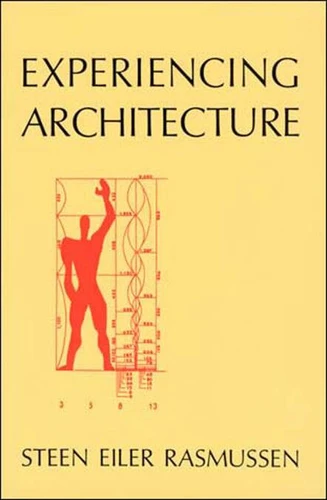Experiencing Architecture, second edition
Par :Formats :
Disponible dans votre compte client Decitre ou Furet du Nord dès validation de votre commande. Le format ePub protégé est :
- Compatible avec une lecture sur My Vivlio (smartphone, tablette, ordinateur)
- Compatible avec une lecture sur liseuses Vivlio
- Pour les liseuses autres que Vivlio, vous devez utiliser le logiciel Adobe Digital Edition. Non compatible avec la lecture sur les liseuses Kindle, Remarkable et Sony
- Non compatible avec un achat hors France métropolitaine
 , qui est-ce ?
, qui est-ce ?Notre partenaire de plateforme de lecture numérique où vous retrouverez l'ensemble de vos ebooks gratuitement
Pour en savoir plus sur nos ebooks, consultez notre aide en ligne ici
- Nombre de pages256
- FormatePub
- ISBN0-262-26567-2
- EAN9780262265676
- Date de parution15/03/1964
- Protection num.Adobe DRM
- Taille18 Mo
- Infos supplémentairesepub
- ÉditeurThe MIT Press
Résumé
A classic examination of superb design through the centuries. Widely regarded as a classic in the field, Experiencing Architecture explores the history and promise of good design. Generously illustrated with historical examples of designing excellence-ranging from teacups, riding boots, and golf balls to the villas of Palladio and the fish-feeding pavilion of Beijing's Winter Palace-Rasmussen's accessible guide invites us to appreciate architecture not only as a profession, but as an art that shapes everyday experience.
In the past, Rasmussen argues, architecture was not just an individual pursuit, but a community undertaking. Dwellings were built with a natural feeling for place, materials and use, resulting in "a remarkably suitable comeliness." While we cannot return to a former age, Rasmussen notes, we can still design spaces that are beautiful and useful by seeking to understand architecture as an art form that must be experienced.
An understanding of good design comes not only from one's professional experience of architecture as an abstract, individual pursuit, but also from one's shared, everyday experience of architecture in real time-its particular use of light, color, shape, scale, texture, rhythm and sound. Experiencing Architecture reminds us of what good architectural design has accomplished over time, what it can accomplish still, and why it is worth pursuing.
Wide-ranging and approachable, it is for anyone who has ever wondered "what instrument the architect plays on."
In the past, Rasmussen argues, architecture was not just an individual pursuit, but a community undertaking. Dwellings were built with a natural feeling for place, materials and use, resulting in "a remarkably suitable comeliness." While we cannot return to a former age, Rasmussen notes, we can still design spaces that are beautiful and useful by seeking to understand architecture as an art form that must be experienced.
An understanding of good design comes not only from one's professional experience of architecture as an abstract, individual pursuit, but also from one's shared, everyday experience of architecture in real time-its particular use of light, color, shape, scale, texture, rhythm and sound. Experiencing Architecture reminds us of what good architectural design has accomplished over time, what it can accomplish still, and why it is worth pursuing.
Wide-ranging and approachable, it is for anyone who has ever wondered "what instrument the architect plays on."
A classic examination of superb design through the centuries. Widely regarded as a classic in the field, Experiencing Architecture explores the history and promise of good design. Generously illustrated with historical examples of designing excellence-ranging from teacups, riding boots, and golf balls to the villas of Palladio and the fish-feeding pavilion of Beijing's Winter Palace-Rasmussen's accessible guide invites us to appreciate architecture not only as a profession, but as an art that shapes everyday experience.
In the past, Rasmussen argues, architecture was not just an individual pursuit, but a community undertaking. Dwellings were built with a natural feeling for place, materials and use, resulting in "a remarkably suitable comeliness." While we cannot return to a former age, Rasmussen notes, we can still design spaces that are beautiful and useful by seeking to understand architecture as an art form that must be experienced.
An understanding of good design comes not only from one's professional experience of architecture as an abstract, individual pursuit, but also from one's shared, everyday experience of architecture in real time-its particular use of light, color, shape, scale, texture, rhythm and sound. Experiencing Architecture reminds us of what good architectural design has accomplished over time, what it can accomplish still, and why it is worth pursuing.
Wide-ranging and approachable, it is for anyone who has ever wondered "what instrument the architect plays on."
In the past, Rasmussen argues, architecture was not just an individual pursuit, but a community undertaking. Dwellings were built with a natural feeling for place, materials and use, resulting in "a remarkably suitable comeliness." While we cannot return to a former age, Rasmussen notes, we can still design spaces that are beautiful and useful by seeking to understand architecture as an art form that must be experienced.
An understanding of good design comes not only from one's professional experience of architecture as an abstract, individual pursuit, but also from one's shared, everyday experience of architecture in real time-its particular use of light, color, shape, scale, texture, rhythm and sound. Experiencing Architecture reminds us of what good architectural design has accomplished over time, what it can accomplish still, and why it is worth pursuing.
Wide-ranging and approachable, it is for anyone who has ever wondered "what instrument the architect plays on."




